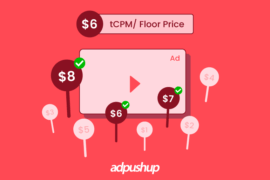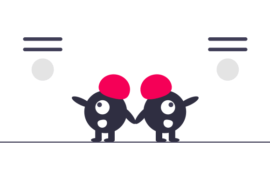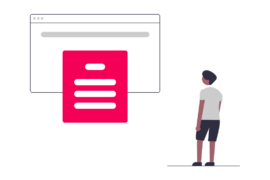Google penalties are not a new concept for publishers. Most publishers have their own stories about getting struck down with a Google penalty and dealing with it to get their rankings back.
Since the list of Google penalties is long and frequently updated, it becomes difficult to keep track of all the dos and don’ts. The ‘two-click penalty’ in one such penalty. Here’s everything you need to know in order to reduce the chances of being flagged with the two-click penalty.
What is Google Two-click Penalty?

Google’s two-click penalty, also known as ‘visit site’ behavior, is when a user clicks on the ad creative and it shows the “visit site” button instead of taking users directly to the advertiser’s site. In order to get to the advertiser’s site, users need to click again on the creative.
Google does this to verify that users did not click on the ad by mistake. However, for publishers, the clickthrough rate (CTR) is calculated based on when the user reaches the advertiser’s site. The requirement of two clicks alerts the users. The issue here for publishers is that many users don’t go for the second click, reducing the CTR and performance of the publisher’s inventory.
Why Do Publishers Get This Penalty?
The two-click behavior makes publishers lose potential revenue due to reduced CTR. Although, Google doesn’t technically consider this as a penalty. Many Google AdSense and AdX publishers should consider this as an underlying symptom of quality/policy issues with the inventory.
Here are some common reasons that trigger visit site behavior:
- Ads are placed too close to each other: If the ad units are placed too close to each other on a webpage, then to eliminate the chances of accidental click, Google shows the “visit site” button. Meaning, to make sure the user clicked the right ad, a confirmation button appears causing the two-click issue.
- Links and buttons placed too close to ad units: Similarly, you will also see the two-click alert if the website content (links and buttons) are placed too close to the ad units. This is considered to be an activity where a publisher is encouraging accidental clicks. Meaning, if page layout, intentionally or unintentionally, leads to accidental clicks, Google starts showing the visit site button.
- Placing ads with an ambiguous header: Ads are required to be properly labeled. Especially in the case of native ads, if ad units are not clearly labelled as “sponsored” or “advertisement”, then the publisher’s inventory is subjected to two-click confirmation.
- Mobile site is not optimized: If the mobile website is not streamlined as per user’s viewport, ad units can clutter up and collide with on-page content. This further increases the chance of accidental clicks and prompts Google to activate two-click confirmation.
- Invalid/Fraudulent traffic detected: Upon detection of high invalid and/or fraudulent traffic, the two-click confirmation is applied. This is to ensure that invalid traffic doesn’t inflate clickthrough rates by adding fake clicks to the ad units.
How to Avoid It?
Publishers should start by following the ad implementation guidelines to avoid accidental clicks. Next, publishers should make efforts to eliminate invalid traffic and clicks. Start by learning about the AdSense policies, do’s and don’ts to prevent invalid traffic.
Fixing this issue is easier than detecting it. Because users don’t report seeing such behavior. And publishers notice the problem with their ad setup only when clickthrough rate and earnings start to go down dramatically. Given, there can be a lot of reasons for seeing a decrease in revenue, it gets difficult for publishers to pinpoint the specific ads that led to two-click behavior.
Since Google doesn’t consider this as a penalty, publishers don’t get any email warnings. Ergo, the easiest method to fix this problem is to avoid the cause. This includes defining proper margin for ad units, labeling them, optimizing ad layout for mobile devices, and monitoring invalid traffic. Finally, adhere to Google Policies to steer clear of the two-click penalty.

Shubham is a digital marketer with rich experience working in the advertisement technology industry. He has vast experience in the programmatic industry, driving business strategy and scaling functions including but not limited to growth and marketing, Operations, process optimization, and Sales.








1 Comment
Great explanation. The Google’s two-click penalty can affect the CTR of the publisher who makes the advertisement of its post. But,if this publisher follow the strict guideline rules, then they can escape from this penalty.